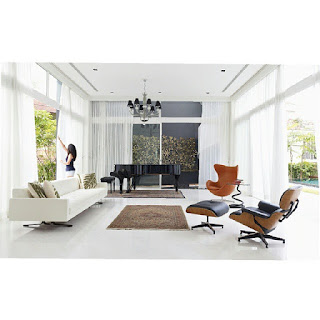What It Takes To Become an Interior Designer
Interior design is not just about having a visual eye for design, playing with furniture and fabrics and having a set formula for designing a space, but in fact, interior designers are not mere decorators. It is a profession that requires not only a deep understanding of design skills and knowledge, but also need to meet stringent requirements, including certifications, business systems and the necessary interpersonal skills.
To work in some of the top interior design firms, you will need expertise in a range of skills, as listed below:
1. Professional Practice
- Practical knowledge that interior designers must carry with them throughout their entire practice. This includes knowledge of: contract administration, business practices and processes, consultant work, project management, problem review and evaluation during alteration and construction, ethics, professional certification, legal responsibilities and professional design organizations.
2. Design
- A wide breadth of knowledge about human behavior to guide their designs and inform how a space is utilized. Some specific interior design elements that designers need to know about: interior components design and detailing, design process, space planning, aesthetics, design concept, lighting design, problem-solving, visual representation types, elements and principles of design, sketching, colour principles.
3. Products and Materials
- Knowing the tools they work with and a comprehensive knowledge of resources that are available in the market. When it comes to products and materials, interior designers need to know: materials, furnishings, fixtures, equipment, finishes, specifications, fixtures, supplier/vendor requirements, cabinetry, product attributes, sustainable resources.
4. Interior Construction, Codes, and Regulations
- Designers need to be aware of the safety standards and guidelines for all aspects of design, construction, and use of space. The body of knowledge designers need to have: building codes, laws, regulations, lighting fixtures and lamps selection, building systems, working drawings for non-loadbearing interior construction analysis of life-safety requirements, security systems, energy management.
5. Communication
- Not only having the right attributes to communicate with stakeholders they work with, but also the ability to communicate through their writing, graphics and design. Communication elements interior designers work with include: oral, visual, and written communication, presentation techniques/media, drawings, preliminary designs, drafting/lettering (manual), study models, client consultation, metric system.
6. Human Environment Needs
- Since human spaces should be designed with the notion of function and form, interior designers need to be acutely aware of how individuals use a space and their interactions with it. Specific human environment needs may involve: programming (problem identification, requirements), research process, client’s/user’s needs, goals, preferences, cultural factors and influences, strategic planning, human factors (ergonomics, anthropometrics), conflict resolution.
Good interior designers with the comprehensive list of skills are hard to find. It takes years of practice, experience and inspiration to achieve the level of expertise and finesse, like those found in top interior design firms Singapore. In the Singapore interior design industry, TOPOS Design is known for having a wealth of experience and a stable of expert designers with the necessary skills needed to execute all kinds of designs.
To work in some of the top interior design firms, you will need expertise in a range of skills, as listed below:
1. Professional Practice
- Practical knowledge that interior designers must carry with them throughout their entire practice. This includes knowledge of: contract administration, business practices and processes, consultant work, project management, problem review and evaluation during alteration and construction, ethics, professional certification, legal responsibilities and professional design organizations.
2. Design
- A wide breadth of knowledge about human behavior to guide their designs and inform how a space is utilized. Some specific interior design elements that designers need to know about: interior components design and detailing, design process, space planning, aesthetics, design concept, lighting design, problem-solving, visual representation types, elements and principles of design, sketching, colour principles.
3. Products and Materials
- Knowing the tools they work with and a comprehensive knowledge of resources that are available in the market. When it comes to products and materials, interior designers need to know: materials, furnishings, fixtures, equipment, finishes, specifications, fixtures, supplier/vendor requirements, cabinetry, product attributes, sustainable resources.
4. Interior Construction, Codes, and Regulations
- Designers need to be aware of the safety standards and guidelines for all aspects of design, construction, and use of space. The body of knowledge designers need to have: building codes, laws, regulations, lighting fixtures and lamps selection, building systems, working drawings for non-loadbearing interior construction analysis of life-safety requirements, security systems, energy management.
5. Communication
- Not only having the right attributes to communicate with stakeholders they work with, but also the ability to communicate through their writing, graphics and design. Communication elements interior designers work with include: oral, visual, and written communication, presentation techniques/media, drawings, preliminary designs, drafting/lettering (manual), study models, client consultation, metric system.
6. Human Environment Needs
- Since human spaces should be designed with the notion of function and form, interior designers need to be acutely aware of how individuals use a space and their interactions with it. Specific human environment needs may involve: programming (problem identification, requirements), research process, client’s/user’s needs, goals, preferences, cultural factors and influences, strategic planning, human factors (ergonomics, anthropometrics), conflict resolution.
Good interior designers with the comprehensive list of skills are hard to find. It takes years of practice, experience and inspiration to achieve the level of expertise and finesse, like those found in top interior design firms Singapore. In the Singapore interior design industry, TOPOS Design is known for having a wealth of experience and a stable of expert designers with the necessary skills needed to execute all kinds of designs.



Comments
Post a Comment